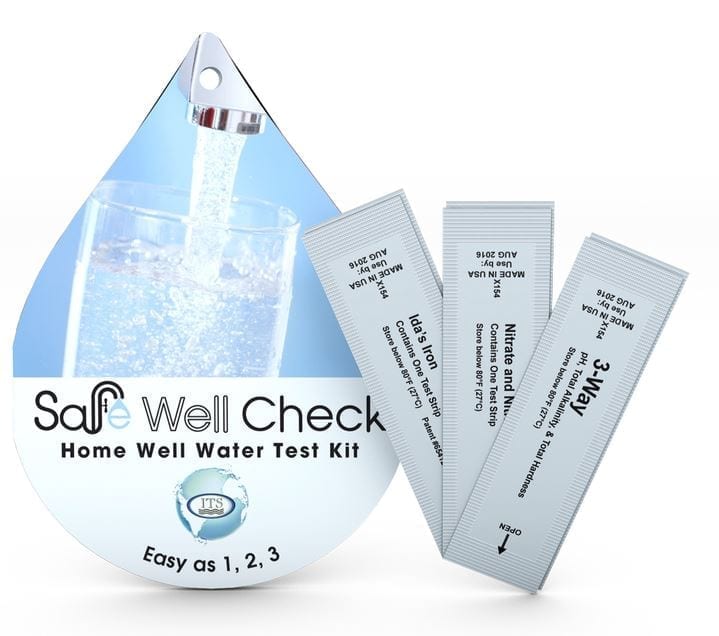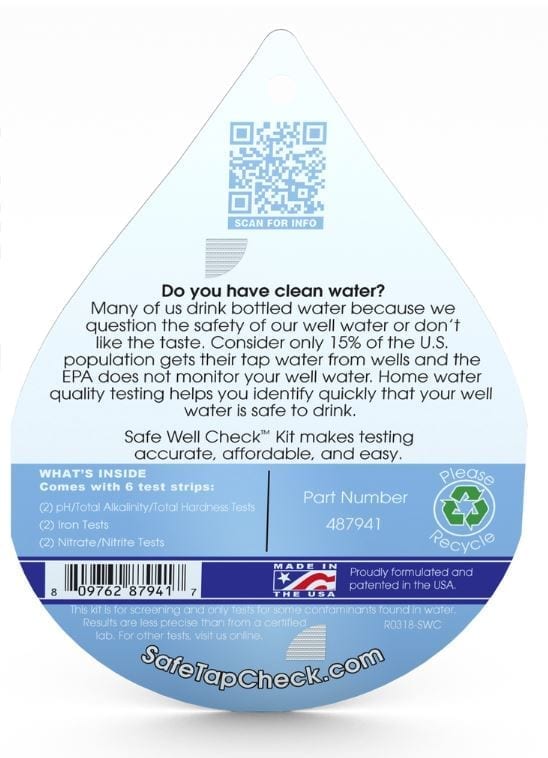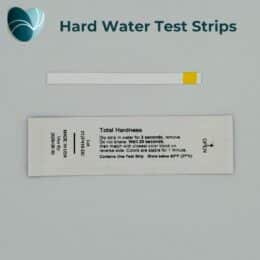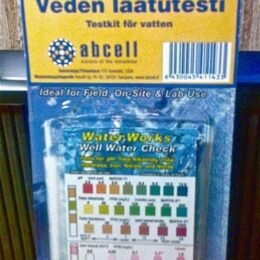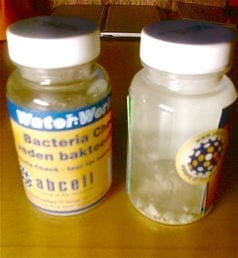Safe Well water rapid test
17,90 €
Fast and reliable home test for well water pH / total alkalinity / hardness, nitrate / nitrite, iron
Availability: In stock
With Safe Well water rapid test you can determine domestic water hardness, pH, chlorine and copper concentrations easily within a minutes
Why well water quality should be inspected
Well water should be examined every 3 years, especially when the water is suspected of causing health symptoms or if the colour, taste or smell of the water has changed substantially. Water can look bright and taste good, even if it contains harmful substances. Regular research can be used to determine the timing of the change and what may have caused the change.
Safe Well water test detects:
Alkalinity: 0,40, 80, 120, 180, 240,500 mg/L
pH: 5.5, 6.5, 7.0, 7.5, 8.0, 8.5, 9.5 pH
Iron (Fe+2): 0.0, 0.05, 0.1, 0.3, 1.0 mg/L
Nitrate (as N): 0, 2.0, 10, 20.50 mg/L
Nitrite (as N): 0.2, 1.0, 1.5, 3.0 mg/L
- pH: Low pH (less than 7) can cause corrosion in piping and with pH above 9,5, lime secretions are easily generated. If the pH of domestic water is more than 9.5, the water may cause it to
alkalinity causes a health hazard. - Alkalinity: Low (less than 60 ppm) water alkalinity, can corrode metal pipes. The combination of high alkalinity and hard water can clog water systems and equipment. In good water, alkalinity is more than 150 ppm in Finland alkalinity is often less than 60 ppm.
- Hardness: In good water the hardness is between 50-100 mg / l. Low hardness combined with low alkalinity can corrode metal pipes. And the high hardness increases the precipitation of lime in the piping.
- Very soft 0-55 mg/l
- Soft 55-110 mg/l
- Medium hard 110-160 mg/l
- Hard 160-215 mg/l
- Hard 215-320 mg/l
- Very hard 320+ mg/l
-
Nitrate and nitrite get into drinking water from agricultural fertilisers, industrial and biological waste and mineral deposits.
- Nitrate limit value: 50 mg/l (nitrate nitrogen 11 mg/l). In good water, nitrate is less than 5 mg/l (less than 1,1 mg/l nitrate nitrogen). If the nitrate content exceeds 25 mg/l, there is a nitrate effect in water.
- Nitrite limit: 0,5 mg/l (nitrite nitrogen 0,15 mg/l). In good water, nitrite is less than 0,01 mg/l (less than 0,001 mg/l as nitrite nitrogen). If the nitrite content exceeds 0,3 mg/l, there is a nitrite effect in water.
-
Iron causes taste damage to food, discolorence of laundry and dishes, and promotes corrosion. Iron does not cause any health damage at concentrations where water
ingestion based on its appearance and taste would be possible.-
Iron limit value: 0,4 mg/l for well water, 0,2 mg/l for water from the public water establishment. In good water, iron is under
0,1 mg/l
-
| Weight | 0,02 kg |
|---|---|
| Dimensions | 15 × 20 × 2 cm |
Related products
-
Water Quality test
💧 Hard Water Test Strips – Fast & Accurate Water Quality Testing
5,50 € – 15,90 €Price range: 5,50 € through 15,90 €

